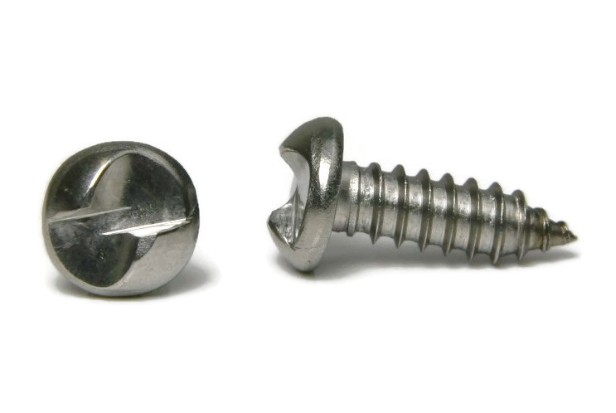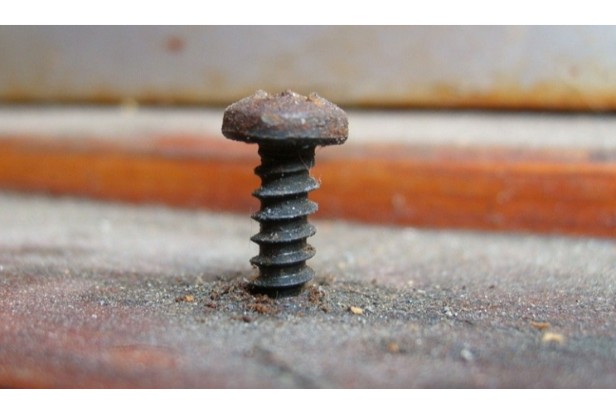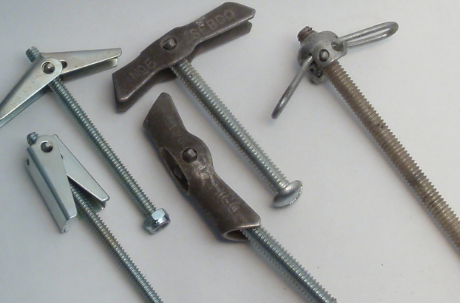
Toggle bolts are powerful drywall anchors that can be used to mount heavy objects on a wall without a stud. Using toggle bolts correctly is explained here!
There isn’t a stud where you need one but you need to mount something heavy on the wall. One of the most powerful anchors for hollow plaster or drywall walls is the toggle bolt.
Toggle bolt installation must be done correctly, though, if you want that holding power. Check out my simple solution below if the screw on your toggle bolt keeps spinning but won’t tighten.
Are you interested in knowing the distinction between toggle bolts and molly bolts? They resemble one another but are not quite the same.
I’ll walk you through the steps you need to take to hang almost anything on the wall correctly, when to use a toggle bolt in place of a different kind of hollow wall anchor, and how to take them down if necessary. Let’s get started!
Table of Contents
How Do Toggle Bolts Work?
A metal screw and two wings that are spring-loaded make up the toggle bolt’s two basic components. To allow them to fit through the opening in the hollow wall, the wings fold in. The wings on the other side spring open as soon as they pass through the hole.
The wings are pulled flat against the rear of the wall as the screw is tightened. So that the drywall doesn’t fall apart, this disperses the weight over a larger surface area. More weight can be supported by it if the wings and bolt are larger.
In order to pull a flat bar tightly against the drywall, another type of toggle bolt, called a strap-style toggle bolt, uses something akin to plastic zip ties. But because of its straightforward design, I like the wing style better.
How to Choose Toggle Bolts
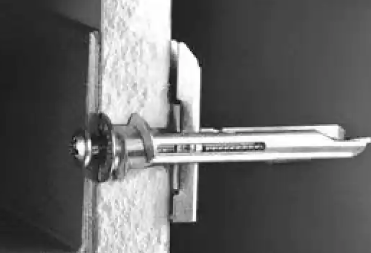
You need a solid surface if you want to mount a heavy object to the wall. It only requires driving a screw or nail long enough to penetrate the stud if there is a wood stud available behind the drywall.
However, those fasteners won’t hold if the wall is hollow after the initial surface. Doughty interior walls are hollow after the first 1/2 or 5/8 inch. CMUs (concrete masonry units) or cinderblocks are hollow after the initial 1 1/4 to 1 1/2 inches of masonry material.
When purchasing toggle bolts, pay close attention to the bolt’s diameter, length, and required drill hole size. Also, buy extra: Two toggle bolts are preferable to one.
Bolt Diameter
The term “bolt diameter” can also refer to a screw or anchor diameter. It is crucial to make sure that the diameter of the bolt matches the diameter of the hole in the object you are hanging because you must use the supplied bolt.
When hanging a wooden object, where you must drill the hole yourself, this usually isn’t a problem. Simply match the diameter of the bolt with the hole in this instance. However, it might be a problem with items like metal TV stands that have pre-drilled holes.
Tip
1/8-inch, 3/16-inch, and 1/4-inch bolt diameters are the most common sizes found at home centers. The majority of the things you might want to hang around the house, like shelves or electronic devices, are covered by these sizes.
Bolt Length
3 inches to 6 inches are the lengths of the bolts.
The reason why bolt lengths appear excessive in comparison to wall thickness is that they must account for both the wall’s thickness and the length of the wings when they are closed.
The length of the bolts must be sufficient without impinging on the hollow wall system’s back. The longest toggle bolt you should use in this situation is 3 inches because drywall systems have a hollow space of 3 1/2 inches.
Required Drill Hole Size
The diameter of the hole that must be drilled to accommodate the closed pair of wings is known as the drill hole size.
The diameter of the bolt is always smaller than the size of the drill hole. For instance, a drill hole size of 1/2 inch is needed for a 1/4-inch bolt.
On the product packaging, the required drill hole size is printed. The manufacturer’s recommendations should be followed because it can be challenging to determine the diameter of the hole.
Safety Considerations
Be mindful of the toggle bolts’ weight capacities. Keep in mind that when something has a high weight capacity, it’s the fastener’s strength, not the wall. It may be better to use extra bolts to distribute the weight more evenly because even a strong toggle bolt in a weak wall can tear out. Use only in walls; do not use in ceilings or other overhead applications. Never drill in an area with power or water running through it.
Tools Needed to Install Toggle Bolts
Toggle bolt installation doesn’t call for a lot of specialized equipment. Here’s all you’ll need:
- Toggle bolts
- Drill
- Drill bits (for creating the hole)
- Matching screwdriver bits
- Stud finder (optional)
How to Install Toggle Bolts
Make sure you adhere to the manufacturer’s installation instructions. There may be slight variations in how some toggle bolts are installed.
To demonstrate how a toggle bolt functions on both sides, I constructed a mock-up of a wall out of a scrap piece of drywall and 2×4 lumber. The procedure should now be more clear, hopefully!
Check Behind the Wall for Wires, Pipes, and Studs
It would be a bad day if you accidentally drilled into a wire or pipe. Additionally, you must make sure that the drywall is hollow so that the toggle bolt wings can deploy freely.
Without X-ray vision, how can you check behind the wall? Many stud finders will warn you if there are electrical wires present, and a false positive reading might actually be a pipe rather than a stud. More information on using a stud finder is available here.
Although these approaches might not be as effective for locating other obstructions, there are other ways to locate a stud without a stud finder. The following video demonstrates several different ways to avoid pipes and wires in the wall.
10 TIPS to avoid Pipes and Cables in Walls (shorter version)
You could purchase a small scope camera and thread it into each hole you intend to drill to get a better look if you anticipate doing this frequently. They are more affordable than you might imagine and easily attach to your smartphone!
Mark and Drill the Hole
So that your wall doesn’t turn into Swiss cheese, be sure to precisely mark the locations of your starter holes. drill once, measure twice!
Don’t angle the drill bit up or down; instead, use a level to ensure that it is inserted straight into the drywall. Some exercises have a bubble level attached to the end to aid in maintaining alignment, or you can simply balance one on top like this.
Additionally, use the correct-sized drill bit. The toggle’s folded wings may fall through a hole that is too large, and vice versa if the hole is too small. Useful drill bit sizes should be specified on the packaging.
Thread the Bolt through the Item to Be Mounted First
To mount your object to the wall, you must first disassemble the two pieces of the toggle bolt. To install the item, remove the screw and insert it through it.
I’m just using a piece of scrap wood with a hole in the middle for this example. Without a wall stud, this is how the brackets for these do-it-yourself closet shelves would be mounted.
Make sure the screw head is large enough to prevent slipping through when mounting a shelf or tv bracket. The screw threads must also fit through the bracket’s hole. If necessary, you can add a washer to increase the screw head’s size.
Push the Toggle Bolt through the Wall
Check to see if the wings fold in toward the screw head end after attaching the butterfly nut to the end of the screw. Pinch the wings together with your fingers, then insert them through the opening.
You should hear the bolts click open once they get to the other side of the wall. If the wings don’t spring open, your toggle bolts won’t hold, and the anchor won’t hold. Make sure you can’t pull the screw out of the wall by giving it some pressure at the end.
Tighten the Bolt Against the Wall
This action might get people into trouble. Unlike regular screws where you place pressure on the head as you drive it in, toggle bolts require you to initially pull on the bolt while tightening the screw. Why?
The wings must be secured in place by the butterfly nut contacting the drywall. If not, there will be no way to tighten it down because the wings will just spin freely behind the wall.
As you tighten the screw, pull it back. In the picture below, I’m pulling the board away from the drywall as I tighten the bolt with a drill. You can tighten the toggle the rest of the way without holding the item in place once you feel that it is engaged.
I advise beginning with a power drill and switching to a screwdriver to manually tighten it while adjusting the height and angle of the object being mounted. When weight is applied, the toggle bolts need to be sufficiently tight to prevent any movement.
You can see how the wings are flat against the drywall over the hole on the back of the wall. You can move your object around and make sure it’s level before tightening the bolt down because there is a lot of room for movement in the hole.
How to Remove a Toggle Bolt
What happens if you try to take the toggle bolts off? Hopefully, you got the positioning right the first time and won’t need to move it for a while. However, there are a few things to do if you do choose to remove the bolt.
Most people simply pull against the screw and back it out of the wall. As a result, the bolt will be removed, and the butterfly nut will be free to fall into the wall cavity. Toggle bolts are intended to operate in this manner.
Toggle bolts can, however, be carefully pulled out if you really want to reuse them. To see the wings, first, loosen it a good bit, then look through the hole with a flashlight.
To enable you to slide the toggle through the opening, hook one of its wings with a piece of bent wire (like an old coat hanger) and fold it inward. This video shows you how:
How to remove a toggle bolt without losing the anchor behind the wall
If you want to try it, it might be more trouble than it’s worth and can deepen your hole, but at least now you know it’s possible!
What Can Toggle Bolts Be Used For?
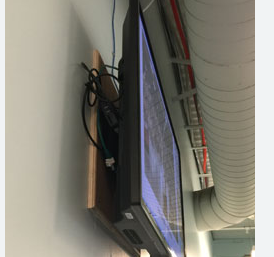
Toggle bolts can be used literally anywhere heavy objects need to be fastened to a hollow wall; for example, large paintings, shelves, and coat hooks. To use and install, they are essentially the ideal anchor. They are also far stronger than other plastic alternatives and incredibly simple to install. When hanging things from the ceiling, they are especially useful.
How Much Weight Can Toggle Bolts Hold?
A standard ⅛” toggle bolt can hold up to 50 pounds, and a ¼” toggle bolt can hold 90 pounds. Some are capable of supporting up to 100 pounds. There are some things to take into account, though.
The thickness of your drywall will be a factor first. The manufacturer typically bases the weight load on the fact that the majority of interior drywall is ½ inch thick. Thinner drywall generally won’t be able to support as much weight.
Check the package once more next. There will be two numbers: the first is the bolt diameter, and the second is the length of the bolt.
Greater shear strength is a result of larger bolt diameter, and larger wings will hold more tightly. When choosing the weight rating, remember to account for the weight of anything you might place on the mounted item, such as books on a floating shelf.
You’ll want to choose a bolt length that will go through the thickness of your mounted item, plus the thickness of the drywall, with at least ¼” at the end for the butterfly wing nut. In this example, I’m mounting a ¾” thick board to ½” drywall, so the 3″ bolt is more than long enough.
But bear in mind that those robust toggle bolts will require a substantial hole in the wall in order for the butterfly-shaped nut to pass through it with ease! You might find that the necessary hole is so large that it is visible when your item is mounted to the wall.
Pros and Cons of Toggle Bolts
Pros
- Good for heavy items
- Excellent sheer strength
- Only a small hole remains when the bolt is removed
- Works well for hollow masonry
Cons
- Can be difficult to draw up the wings behind the wall
- The attached bolt must be used; no substitutes
- Bolt cannot be fully removed
Final Words: Use Toggle Bolts to Hang Items from the Ceiling
Hopefully, this guide was able to help you with your toggle bolt installation issues! They allow you to place heavy objects exactly where you want them on the wall since there is no need for a stud.

